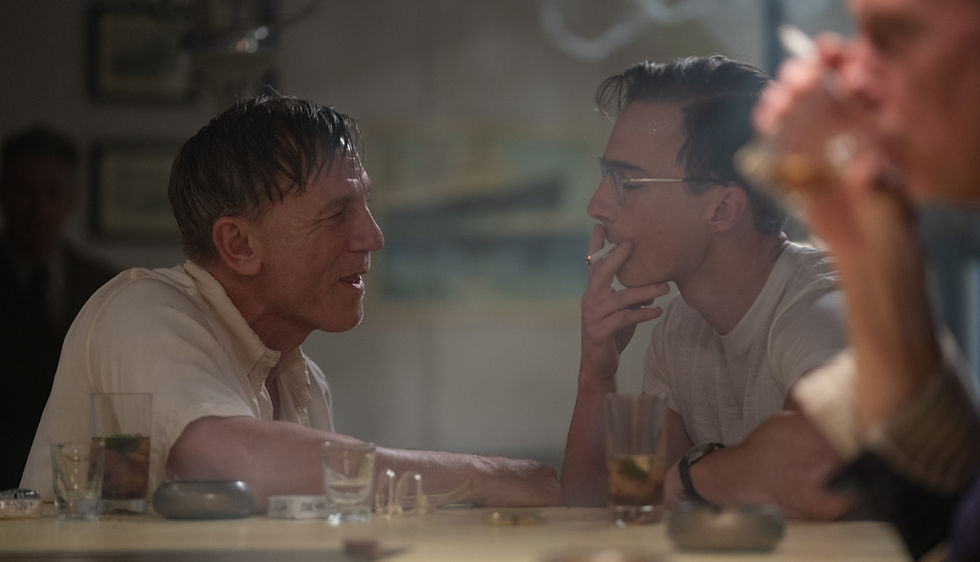Venezia 81 Picks: Yeo Siew Hua's Stranger Eyes Serves as CCTV Footage Surveilling Singaporean Society.
- Rebecca Niccolai
- Sep 9, 2024
- 3 min read
While I do extract textual analysis from my ‘Venezia 81 Picks’ to display their filmic weight and consequently justify their inclusion amongst my list of favourites, I will be honest and say that Yeo Siew Hua’s Stranger Eyes makes it within my top five also because of the nostalgic value it holds for me, being set in Singapore, the city I grew up in. I began to take a biassed approach as a spectator right from the opening scene of the film which was shot at a park beside my high school. For a good part of the film’s duration, I was preoccupied with recognising familiar spots in the city and gaping at even the most ordinary of shooting locations, however my fixation with Stranger Eye’s setting led me to identify and appreciate Singapore as a prominent ‘character’ in Yeo’s Venezia debut. Well known as one of the cities in the world with the most CCTV cameras, Yeo exploits Singapore's profile as an extremely safe and controlled city to comment on the looming sense of surveillance which lingers across the island.
Yeo does not strictly rely on Singapore’s intimidating amount of security cameras to explore Stranger Eye’s thematic forefront of surveillance, despite his insertion of a few close up shots of the city’s cameras (that tend to be three or four stacked or lined up beside each other so as to cover the most area possible) which purposefully disturb the film’s visual and narrative continuity and recenters the viewer’s attention on the principal thread of his work. My relative familiarity with Singaporean culture leads me to interpret his film’s broad conceptual focus as being more of a testament to Singaporean society’s tendency to capture and disseminate footage of unorthodox behaviour, stripping the instance of its context and thus restricting potential mercy or compassion to be felt for the subject of the circulating material. Yeo fairly considers both the just and invasive side of this distinctly Singaporean scenario by creating a Rear Window like dynamic between Peiying and her stalker Lao Wu. Peiying initially seeks and surveys Lao Wu with the intent to uncover his unlawful conduct, mimicking the behaviour of locals who contribute to exposé social media accounts with the objective of holding eccentric or reckless individuals accountable.
Paradoxically, Yeo also incorporates wide frames shots of Singapore’s distinct public housing estates (HDBs), implicitly driving us to sympathise with Lao Wu, who has been befittingly villainized throughout most of the film’s duration. Yeo captures Lao Wu’s building at night, with all the lights coming from the myriad of apartments dimmed or switched off, leaving viewers with a melancholic picture of Lao Wu’s personal life. Though the frame is not visually intricate enough to justify his actions, it situates him within a lonely and ostracised environment which explains his fixation with Peiying’s slightly more animated life, quietly giving a voice to those who are targeted by said online vigilante groups.
Yeo does an admirable job as a director in giving us free reign to fabricate our opinion on Stranger Eye’s subtext. His frequent juxtaposition of what can be deemed as ethical (CCTV) and unethical (stalking) surveillance forces us to repeatedly consider the positive and negative aspects of the transcendental scenario between Peiying and Lao Wu and its wider societal implications. He impartially concludes his film by acknowledging that over surveillance is an intrinsic part of Singaporean culture and society therefore accepting that healing locals’ relationship with vigilance cannot be an immediate process, and he metaphorically communicates this realisation through Junyang’s infatuation and eventual perusal of Ling Po. Despite Junyang’s familiarity with the turmoil Peiying’s stalking experience brought upon her, his exposure and proximity to the issue inevitably brings him to partake in it.





Comments